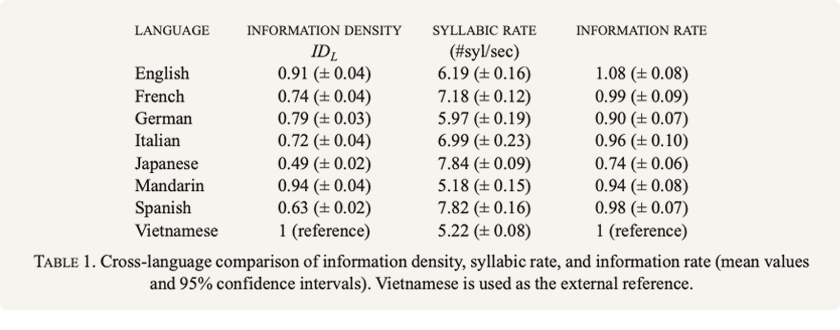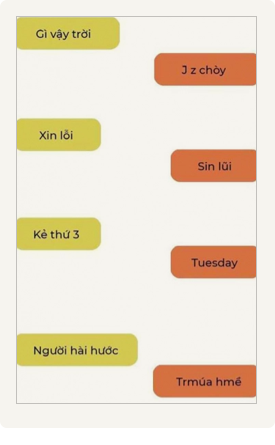Language plays a critical role in defining a nation’s cultural identity in today’s interconnected world. Despite this, many Vietnamese people have become increasingly reliant on using loanwords from foreign languages, causing their national language to decline. As a result, even advanced translation tools like Google Translate may struggle to understand the daily conversations of some Vietnamese people. Meanwhile, native English speakers may be surprised at their ability to comprehend half of the language used. The global Vietnamese community must recognize the value of preserving their linguistic heritage and takes steps to preserve it for future generations.
1. A glimpse of Vietnamese:

As the first language of more than 80 million King people in Vietnam, Vietnamese belongs to the Viet-Muong branch from the Mon-Khmer group of the Austroasiatic language family.
It is one of a few languages from Asia that uses Latin script as its writing system rather than other symbols.

Research from Université de Lyon has found that Vietnamese has the highest information intensity index among widely spoken languages, allowing for more information to be conveyed with the same number of words and syllables. Additionally, the language is unique in its tonal system, with each of the six tones used to convey a different meaning for the same word. For example, the word “ma” can mean “ghost,” “má” can mean “mother,” and so on. Despite this complexity, the Vietnamese language is rich and beautiful, making it a fascinating subject for linguists and language enthusiasts.
However, the purity of this language is being threatened by its native speakers, who often use excessive borrowing of vocabulary from other languages. This trend endangers the language’s linguistic heritage and cultural identity. Therefore, it is essential to use borrowed words with consideration and moderation to preserve the integrity and richness of this beautiful language.
2. A few factors that are affecting the purity of modern Vietnamese:
- Inappropriate collocation and word choice are imposed on daily conversations.
Unfortunately, inappropriate collocation and word choice have become increasingly common in daily conversations in Vietnam. In particular, some speakers have begun using the phrase “ổn áp,” meaning “voltage regulation,” when they mean to say “it’s fine” or “it’s okay.” This example is a misuse of the language and can contribute to misunderstandings in communication. The correct word for this context is “ổn,” which carries the intended meaning without the additional technical connotation. The overuse of “ổn áp” is not only inaccurate, but it also detracts from the beauty and richness of the Vietnamese language. - The invasion of exotic vocabulary and foreign words is abusing the Vietnamese language.
The Vietnamese language is under attack by the influx of exotic vocabulary and foreign words. With its rich history, including a thousand years as a colony of China and 100 years under French and American control, the Vietnamese language is a melting pot of cultural influences. Currently, borrowed words comprise 28% of the modern Vietnamese lexicon, with 25.3% coming from Chinese, 1.2% from French, 0.3% from English, and 12% from other languages. However, in recent years, the English language has become increasingly prominent, with more and more Vietnamese speakers opting to use English words instead of their native language. This trend is particularly evident among the younger generation, who may use phrases such as “một khoảng time” instead of the more accurate “một khoảng thời gian.” This overreliance on English words is damaging the purity of the Vietnamese language and threatens to dilute its cultural heritage. - The Younger generation is “styling” their informal writing pieces using unofficial or incorrect grammar rules.

The younger generation adopts informal and often incorrect grammar in their written communication. To appear trendy, some young Vietnamese individuals are deliberately misspelling words and creating new spellings that deviate from the proper grammar rules. This phenomenon, known as “teencode,” is becoming increasingly popular among the younger generation. For example, “Tuesday” and “the third one” are both translated as “thứ ba”. To clarify, in the context mentioned, “Tuesday” is used negatively to refer to someone late in a romantic relationship. This trend towards informal and incorrect language usage in written communications among the younger generation can be potentially detrimental to the preservation of proper usage of the Vietnamese language.
This teen-like writing style initially appears witty and trendy, but continued exposure to and use of teencode may cause formal writing skills to decline, even if it may worsen generational miscommunication.
3. To preserve the purity of Vietnamese:
Purity means that there should be no impurity, and vocabulary borrowing should be made with consideration and moderation.
- Pure Vietnamese vocabulary is supposed to be applied as long as the meaning does not change.

Using pure Vietnamese vocabulary is recommended as long as the meaning remains unchanged. In a headline from a Vietnamese newspaper, the use of “hỏa xa”, a Sino-Vietnamese term, instead of “xe lửa”, a pure Vietnamese word, has sparked controversy. The preference should be given to Vietnamese-derived words over foreign language loanwords unless there is no suitable Vietnamese equivalent. The slogan “Vietnamese people use Vietnamese goods” promoted by the Vietnam Ministry of Industry and Trade should also be embraced in the language usage. - The correct language style guide, spelling, and collocation should be maintained under all circumstances.
Exposure to “teencode” for a period of time may form a habit of unintentionally misspelling words that could direct our writing in formal contexts. The “teencode” users will look unprofessional in business communications, and the misspelling can cause misunderstandings among unfamiliar speakers.
In addition, these codes take non-teen code users more time to research and interpret them to a standard style language. If time is gold, this trendy style can cost us tons of it.
Although it is OK to have cute typos during informal conversations, sustainable correct spelling and style guides can help ensure effective communication no matter our context. - Reading more Vietnamese literature works is recommended to enlarge our vocabulary.
What phrase would describe the disparity between art and reality in this picture?






